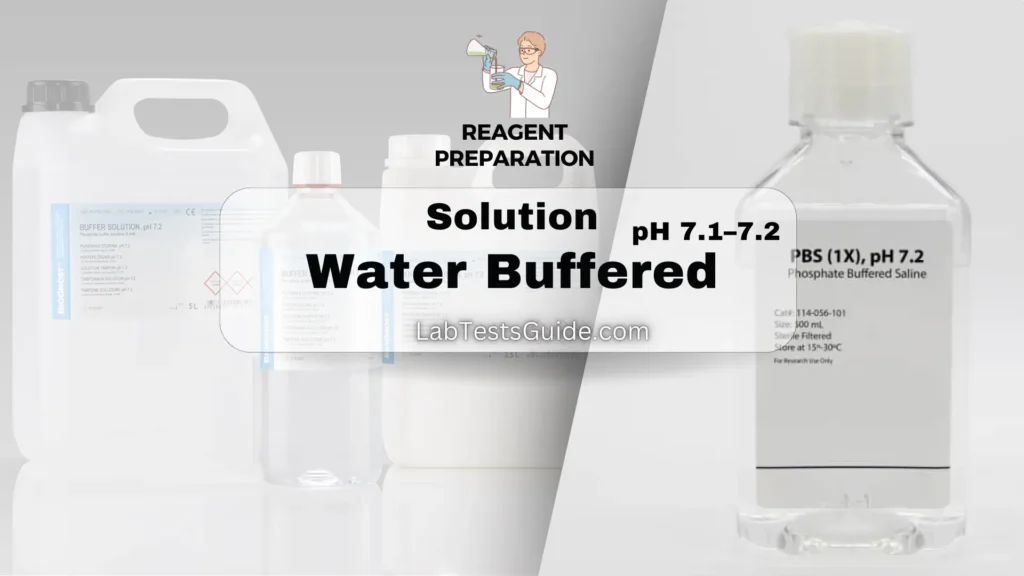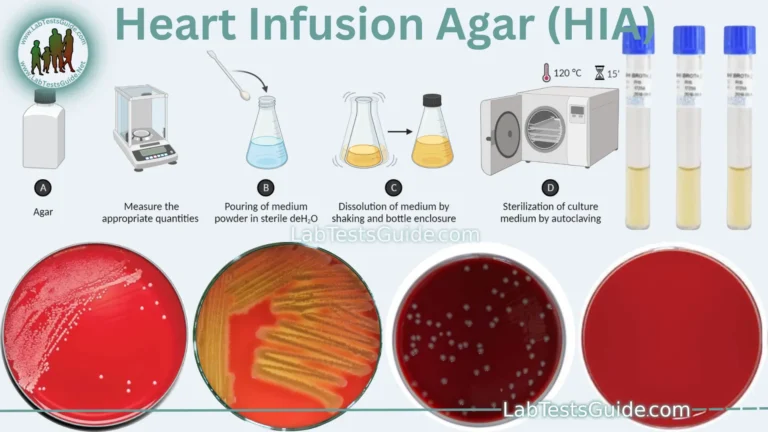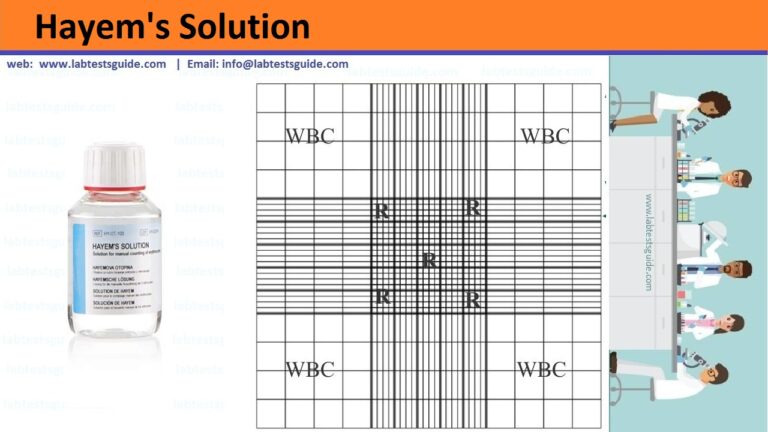A water buffer with a pH range of 7.1–7.2 is considered a neutral buffer, slightly basic. It helps to maintain a stable pH environment for various laboratory applications. This type of buffer is useful in experiments or processes where maintaining a near-neutral pH is critical for accurate results or proper functioning of biochemical reactions.

Uses of Water Buffered:
- Biological Research: Provides a stable pH for enzyme assays and cell culture media, ensuring optimal conditions for biological reactions and cell growth.
- Clinical Diagnostics: Used in tests and procedures that require a neutral pH to maintain the integrity of samples and reagents.
- Chemical Reactions: Helps maintain consistent pH in chemical reactions where a near-neutral environment is needed to control reaction rates and outcomes.
- Pharmaceutical Development: Assists in formulation processes and stability studies where maintaining a neutral pH is critical for drug efficacy and safety.
- Electrochemical Measurements: Serves as a reference buffer in electrochemical cells and pH meters to calibrate and ensure accurate readings.
Composition and Preparation of Water Buffered:
Here are the compositions of Stock Phosphate Solution A, Stock Phosphate Solution B, and the Buffered Water:
Stock Phosphate Solution A:
| Component | Amount |
|---|---|
| Sodium dihydrogen phosphate (NaH₂PO₄·H₂O) | 27.6 g |
| Distilled water | to 1 liter |
Preparation:
- Weigh 27.6 g of sodium dihydrogen phosphate.
- Transfer to a 1-liter volumetric flask.
- Half fill with distilled water, dissolve the chemical, and make up to the 1-liter mark.
- Mix well, transfer to a leak-proof bottle, label, and store at 2–8 °C.
Stock Phosphate Solution B
| Component | Amount |
|---|---|
| Di-sodium hydrogen phosphate (Na₂HPO₄) | 28.39 g |
| Distilled water | to 1 liter |
Preparation:
- Weigh 28.39 g of di-sodium hydrogen phosphate.
- Transfer to a 1-liter volumetric flask.
- Half fill with distilled water, dissolve the chemical, and make up to the 1-liter mark.
- Mix well, transfer to a leak-proof bottle, label, and store at 2–8 °C.
Buffered Water (pH 7.1-7.2)
| Component | Amount |
|---|---|
| Stock Phosphate Solution A | 140 ml |
| Stock Phosphate Solution B | 360 ml |
| Distilled water | 500 ml |
Preparation:
- Measure 140 ml of Stock Phosphate Solution A and 360 ml of Stock Phosphate Solution B.
- Add to 500 ml of distilled water in a clean leak-proof bottle.
- Mix thoroughly and check pH with narrow range pH papers or a pH meter. Adjust if necessary.
- Label the bottle and store at room temperature. The buffer is stable for several months.
Precautions:
- Accurate Measurement: Always weigh chemicals precisely and use accurate volumetric flasks to ensure correct concentrations.
- pH Adjustment: Regularly check the pH during preparation and adjust if necessary, as pH can affect buffer performance.
- Clean Equipment: Use clean, dry equipment and containers to avoid contamination and ensure accurate results.
- Storage: Store buffer solutions at recommended temperatures (2–8 °C for stock solutions, room temperature for buffered water) to maintain stability.
- Avoid Cross-Contamination: Use dedicated tools for each solution to prevent cross-contamination between stock solutions.
- Labeling: Clearly label all bottles with the contents, preparation date, and storage conditions to avoid mix-ups.
- Handling Chemicals: Wear appropriate personal protective equipment (PPE) such as gloves and safety glasses when handling chemicals.
- Disposal: Follow proper disposal procedures for any chemical waste or expired solutions to ensure safety and compliance with regulations.
- Mixing: When mixing solutions, do so in a well-ventilated area and ensure complete dissolution of all chemicals to achieve the desired buffer strength.
- Temperature Sensitivity: Be aware that temperature changes can affect the pH and stability of buffer solutions; keep them in a stable environment.
Uses of Water Buffered in Clinical Laboratories:
- Enzyme Assays: Provides a stable pH environment to ensure accurate and reliable enzyme activity measurements.
- Cell Culture: Maintains optimal pH conditions for growing and sustaining cells, preventing pH-induced stress that could affect cell health and experimental outcomes.
- Buffer for Reagents: Used to dilute or dissolve reagents, maintaining their stability and effectiveness in diagnostic tests and assays.
- Sample Preservation: Helps maintain the pH of biological samples, reducing degradation or alteration of sample components prior to analysis.
- Calibration of Equipment: Used in calibration solutions for pH meters and other analytical instruments to ensure accurate readings.
- Clinical Chemistry Tests: Ensures that chemical reactions in tests are performed at a consistent pH, which is critical for accurate test results.
- Microbiological Testing: Maintains a stable pH for the growth and assessment of microorganisms, ensuring reliable results in culture and sensitivity tests.
- Quality Control: Acts as a standard in quality control procedures, ensuring that testing reagents and equipment are functioning properly.
- Stabilization of Biochemical Reactions: Provides a controlled environment for biochemical reactions, minimizing variability and improving reproducibility of test results.
- Electrophoresis: Used as a running buffer in electrophoresis to maintain consistent pH during separation and analysis of biomolecules.
Possible References Used





